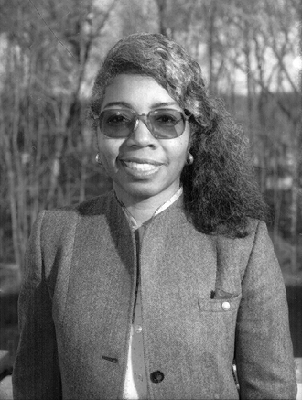Becoming just one of a chemist, physicist or inventor is no easy feat, so to master all three fields, in addition to being black, female, and unsupported by key family members in early 20th century USA is quite simply remarkable.
Born in 1943, Maryland, a young Valerie L. Thomas would often observe her father tinkering with the television, studying the mechanical parts inside the set as he worked. With the interest sparked, at age eight she checked out the title ‘The Boys First Book on Electronics’ from her local library, eager to explore an intrigue ignited by her father’s own interest, and in no way deterred by the book’s clear target audience. Yet, most curiously, her father refused to assist her with any of the projects detailed in the book.
There would be more obstacles to overcome beyond the home too; at her all-girls high school, she was strongly discouraged to pursue Science and Maths courses. Eventually she did manage to enrol on a Physics course – one that would lead her to Morgan State University, where she was one of only two women majoring in Physics. There, Thomas excelled in her STEM modules, so much so that she was offered a data analyst position at NASA after graduating with a Chemistry degree.
While at NASA, Thomas grew to be a valued employee. In the 1970s, she managed to develop the image-processing systems for Landsat- the first satellite to send images to the Earth from space. But it was in her invention of the Illusion Transmitter, in 1980, that she truly made her name.

Associate chief of the NASA Space Science Data Operations Office, data scientist Valerie L. Thomas in 1996.
Thomas’ techniques form the premise upon which current 3D technology works: they are used in fields from cinema and home television (rather fittingly) to photography. The device works by producing an optical illusion via two concave mirrors, forming images that appear to be inside or behind the mirror. These parabolic mirrors create a parallax view (the effect whereby the position or direction of an object appears to differ when viewed from different positions) of the subject, which appears three-dimensional to viewers.
Thomas’s ingenuity came in taking the various views created to render an “illusion” or as is now termed, an illustration in ‘3D’. While this was first used for observing Haley’s Comet and other space phenomena, the process was quickly and subsequently adopted by NASA, being used to analyse images of distant entities in space in a three dimensional manner, as well as adapted for use in surgery and video screens up to this day.
Although 3D technology is often traced back to the beginning of photography, it was The Illusion Transmitter that really paved the way for 3D anime and film. This illusions formed show the combined effect of multiple images, and is the same technology utilised in modern 3D glasses.
Thomas continued to work for NASA until her retirement in 1995. During that time, she held a number of positions, including Project Manager of the Space Physics Analysis Network and Associate Chief of the Space Science Data Operations Office.
Throughout her career, Thomas contributed significantly to space study, helping to develop computer program designs supporting research on comets, the ozone layer, and satellite technology. As such, she was presented with various NASA accolades, including the Goddard Space Flight Centre Award of Merit and the NASA Equal Opportunity Medal. Her success as a scientist, despite the lack of early support for her interests, inspired Thomas to reach out to students: in addition to her work at NASA, she mentored youths through the National Technical Association and Science Mathematics Aerospace Research and Technology, Inc.
Thomas’s determination, resolve and venerable attitude offers a lesson for all metiers, teaching both literally and figuratively to never judge a book by its cover, and enables all to see that no matter the circumstance, inequality or familial hardship, anyone can be three dimensional.
